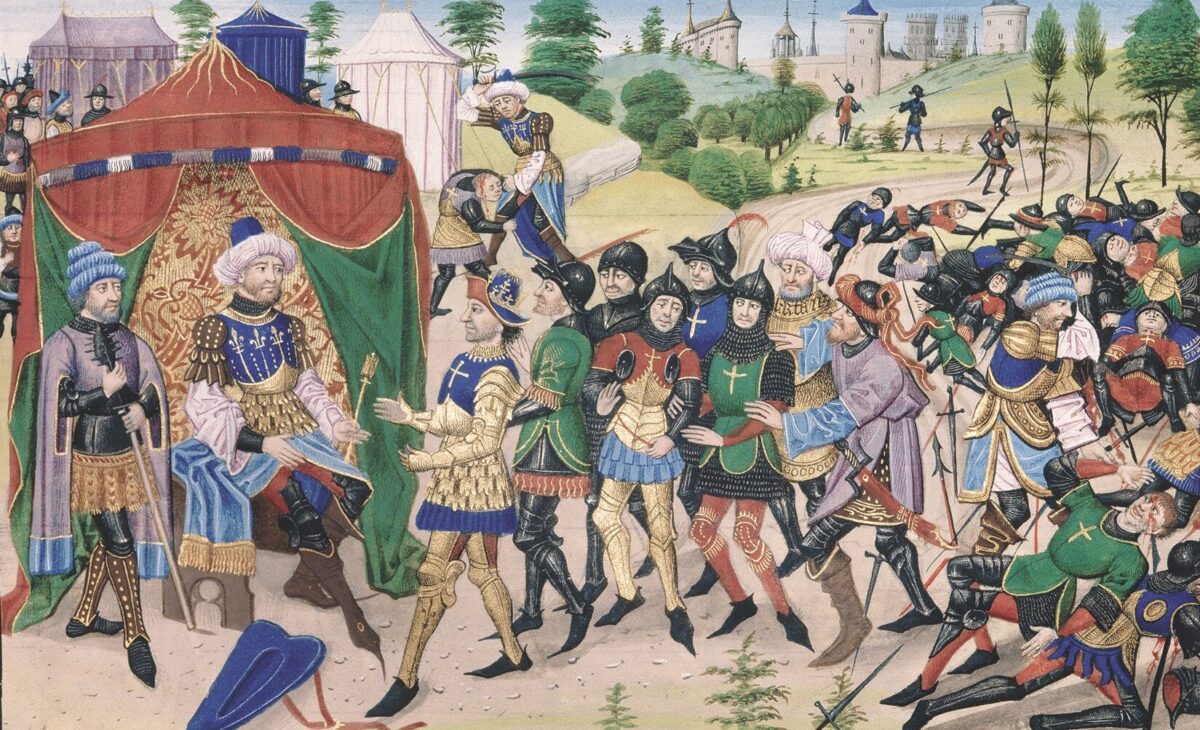On July 2, 1187, the hottest time of year in the Holy Land, King Guy of Jerusalem ordered his 20,000-strong army into the desert from Sepphoris—a defensible position in the central Levant with good grazing and water—toward the besieged Christian stronghold of Tiberias, 15 miles east on the Sea of Galilee. As an act of faith, they bore a relic of the “True Cross” before them. The relic did nothing to ensure their victory.
As Guy left Sepphoris behind, his Muslim counterpart, Saladin, had mounted archers loose arrows at the Crusader van and rear. Throughout the morning heavily-armored Christian knights and infantrymen armed with relatively slow-firing crossbows suffered under withering Muslim fire. Guy’s casualties were heavy, and the harassed rear echelon, where the vaunted Knights Templar and Hospitaller rode, nearly lost contact with the main body.
Finally, the Crusaders reached the springs at Turan, some 6 miles from Sepphoris. Rather than spend the night there, however, Guy resumed the march, hoping to cover the remaining 9 miles to Tiberias by nightfall.
In doing so, he ignored his not only Crusader history, but also his own. In 1182 a Muslim-harassed Frankish army in the region had advanced only 8 miles in one day, while in 1183 Guy himself had managed only 6 miles in a similar situation. “Satan incited Guy to do what ran counter to his purpose,” Saladin later wrote.
As Guy left Turan, Saladin again unleashed his skirmishers, bringing the Christian rearguard to a standstill and forcing the Crusaders to encamp on the waterless plain near the village of Maskana.
The Muslim commander then had camel caravans bring up water and tens of thousands of arrows, while his men burned brush upwind of the Crusader camp in order to choke out the encamped enemy. Guy gambled his men could make the dash to Tiberias.
In the morning Saladin tightened the noose, cutting off Guy’s escape route and advancing his own army in a crescent formation. Saladin then had his archers rain arrows on the Christian army, while his cavalry darted in to bait the struggling Crusaders.
As panic spread through Guy’s ranks, parched infantrymen broke for the Sea of Galilee, which appeared tantalizingly close. Saladin’s men decimated them and drove the survivors back against the Horns of Hattin, twin volcanic peaks along the line of march.
Guy and his knights sought to block the Muslim cavalry and led several European-style charges. But lacking infantry protection, their horses fell easy prey to Muslim archers. Once dismounted, the all-but-immobilized knights were overrun by Saladin’s army and killed or captured.
Hattin was a major defeat for the Crusaders. Their leaders and about 150 knights were captured. Guy himself was held a year before being released.
This article appeared in the May 2021 issue of Military History magazine. For more stories, subscribe here and visit us on Facebook:





